Kimberley, South Africa


Datnow Family: Benjamin, Levine, Mike
Farming in the Kimberley area
THE DATNOWS as at 27 May
Compiled by Geraldine Auerbach MBE, London, May 2020 from information supplied by Beverly Datnow, Lisette Shain Datnow, Dee Reddan. David Kretzmar, Ron Kaftel, Norman Datnow, Tracey Griffiths, David Datnow, and Trevor Datnow
(via the Marrick Safari Website).
The Datnows were the best-known Jewish farmers in the Kimberley area. They had many farms on which were extensive dairy operations, suppling milk and other diary produce to the town. They also farmed with cattle, sheep and goats – and game. They have been an important part of the fabric of Kimberley life and of the Jewish Community from the early 1900s - until today. This is their story.
The Patriarch Benjamin Datnov and his wife Sarah née Salkinder
The Kimberley patriarch was Benjamin Datnov born in 1873 in Kaidan Lithuania.. Benjamin was a learned man – steeped in Judaism. He was also qualified as a mohel (ritual circumciser) and shochet (ritual Slaughterer).
The village where the Datnov’s had settled was Pumpenai in the Ponevezh district of the Kovno province in North Eastern Lithuania. (It’s just south west of Birzh where the Kretzmars come from). At that time, before WW1, this was all was part of the Russian Empire. Ron Kaftel says the family had been farmers there. They farmed on land that was hired, as Jews were not allowed to own land.

In about 1900, Benjamin married Sarah née Salkinder, born in 1881, above they are seen at their wedding in Lithuania.
Benjamin and Sarah Datnov with their first two very little boys Morris (b 1902) and baby Levine (b March 1903) left their shtetl Pumpenai in the Kovno guberniya of Lithuania in August 1903. They travelled via the port of Libau in Latvia for South Africa. They stayed over in London in the Poor Jews Temporary Shelter from 13/8/1903 to 22/8/1903 (This facility was supported by the shipping companies, to look after those passing through on this great wave of migration). They then boarded the Ship ‘Briton’ for Africa.
Their children were: Morris M Datnow b 1902 Pumpenai, who became a gynaecologist in Liverpool; Levine Datnow (1903-1996) b Pumpenai, became a farmer in Kimberley Michael Datnow (1908 1998) b Kimberley, became a farmer in Kimberley Dina Kaftel b 1912 married Alec Kaftel and went to live in Brakpan, then Houghton Johannesburg, Rachel Datnow (1915 – 2002). Ray became a vet and married Lionel Albert, a New Zealander. They lived in Auckland, New Zealand, where she died in 2002 at the age of 87. Jacob Datnow (1919 – 1984) known as Jack, worked for the railways. He lived in Synagogue street with wife Dolly and 6 children. He died in 1984 aged 65 and was buried in Kimberley.
Mike and Levine both became farmers in the Kimberley area, at first with their father Benjamin and then on their own and then with their own children.

Great Grandson of Benjamin and Sarah, David Marcus, (son of Beverly – daughter of Levine Datnow) visited the ancestral Shtetl of Pumpenai in 2015 on his extensive world travels.
Benjamin Datnov’s farms around Kimberley
Geraldine had a long chat to Ron Kaftel ( suggested by Lisette) on 13 May 2020. Ron is the son of Benjamin’s daughter Dina known as Dine). He was born in 1937 and remembers Oupa Benjamin very well. He recalls the early days and said that the family were experienced farmers in Lithuania – on rented land though, as Jews were not able to own land. He says they were not well to do when they first came out.
He thinks that Benjamin and his family chose to come to Kimberley because of the opportunities that the diamond trade offered. Ouma Sarah’s family the Salkinders were already in Kimberley and involved with diamonds in some way. Benjamin possibly found that even though digging for diamonds was probably not an option, as De Beers had that sewn up, farming to supply the growing population would be a way to get on.
Geraldine writes: De Beers in the early 1900s was very powerful in Kimberley town, owning and running all the mines and every major Institution and employing most of the people. Having put all their money and effort into amalgamating all the diamond mines and so controlling of supply from the existing mines, they were always nervous that new pipes or diamondiferous areas would be discovered, and diggers would rush in and destroy their monopoly and thus diamonds could lose their value and their efforts come to nought.
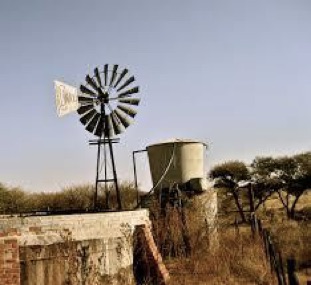
So, Benjamin and his family settled in the Kimberley area. It seems that first of all they farmed just over the border in the Orange Free State on farms that might well have been owned by De Beers. Gradually, or maybe soon, he was able to hire more farms or buy his own farms.
Above is a generic picture of a farm in the Kimberley area with its borehole and massive windmill (made by Climax or Southern Cross), concrete or stone dam and water tank, with the thorn trees and grass of the terrain.
The central farmstead for the family was the farm Benjamin Datnov acquired early on, called Bachelors Hall. There he settled soon after he arrived in South Africa in 1903 and started a big dairy operation. And that is where his five children grew up – helping on the farms. Another major acquisition was Klippiespan, which may also have originally been a De Beers farm, and another big dairy operation was set up there, also with about 200 with Friesland cows.
David Kretzmar (Mikes son-in-law) writes (May 2020): From Bachelors Hall they delivered milk to some of the De Beers mines next to Kimberley and also to customers in the town itself. Mike and his younger sister Dina (we called her Aunty Dine) used to drive a donkey cart to Kimberley each morning before school. It was loaded with cans of milk from the previous afternoon and that early morning’s milking sessions, and they delivered the milk before school. They dropped off cans at some people (I’m guessing smaller than the big 10 Gallon cans that were the largest they used) and also went to customer’s homes where they “ladled” out smaller amounts of milk.
Once done with the milk ‘round’, they would outspan the donkeys at the Beaconsfield common, and leave the cart and the donkeys there while they went to school. After school they would go back to that area, collect and span in the donkeys and then head home. Both Mike and Dine used to speak about taking turns to open the many farm gates on the road into town, and of course the way back as well. The road in those days was literally a farm road going through all the various farms, with gates separating the camps and the farms.
They both used to enjoy relating a story about how there was a camp on one of the farms they had to go through where there was a bull which was aggressive and scared the donkeys. The donkeys were thus nervous about going through the gate into and through that camp and Mike and Dine could not persuade the donkeys to move. As a last resort, as they told it, and here Dine would do the talking, she got down from the cart with whip in hand, but holding it the “wrong way round”, and walked up behind one of the donkeys and shoved the handle up its ……….. – the result was exactly what they wanted, and the donkey shot forward through the gate and they were able to proceed on their way!! I’m not making this up. This story was told by Mike and Dine a number of times.
Benjamin acquired several more farms in the area, either hiring or buying. His sons as they reached maturity managed them for and with him. As well as delivering milk to households and businesses, Ron said that Benjamin opened several outlets for his milk in town. He got the Harris Hartley Dairy, started an ice cream factory that became the Covent Garden ice cream factory, a cheese factory and opened a milk bar in town that Levine’s wife Betsy ran for many years.
Benjamin was a learned man. He could have been a rabbi. Many rabbis consulted him on Jewish questions. He was also a certified a shochet and mohel. Ron says he was a very religious man and his Judaism meant everything to him. He was insistent that his children should marry within the faith, which was quite difficult in that situation. When a young Jewish businessman came travelling to the farm, he introduced him to his daughter Dina (Ron’s mother) and made sure they fell in love and married. They went to live in Brakpan where Ron’s father had several shops. (later they moved to Houghton Johannesburg).
In 1936 Benjamin’s wife Sarah died aged 65. (For some reason she is buried in Johannesburg). Benjamin remained in Kimberley until after the war. In about 1946, Benjamin relocated to Johannesburg. At this stage it seems that he gave the family seat Bachelors Hall to his daughter Dina, the neighbouring farm Uitkyk to daughter Ray and the other big dairy operation on Klippiespan to son Levine. Mike it seems managed the farms for Dina and Ray. Ron said Benjamin would not leave or give farms to his sons that had married out of the faith ie Mike and Jack. He sold some other farms.
Son Mike continued to run the farm at Bachelors Hall until he was able to buy out his sister Dina and own the farm himself. Later it was acquired by his son Tony.
After moving to Johannesburg in 1946, Benjamin lived in a flat in Yeoville where his Jewish learning was appreciated. Ron says he used to ‘run’ the shul there. He married again to Taube Rachel Blacher. (Not sure what year they married).
In the 1950s Benjamin started looking for farms around Johannesburg. He bought farms in the Vereeniging /Meyerton /Henley-on-Klip area. He drove cattle up from Kimberley to his new farms. He later sold the Transvaal farms to Datnow relatives in Johannesburg. Some were later laid out as townships and sold off in that way eg Henley-on-Klip and Meyerton.
Benjamin died in Johannesburg in December 1954 aged 81. He is also buried in the Brixton Cemetery Johannesburg. His second wife Taube outlived him for two years
David Kretzmar says: As I recall, the Datnov family first lived in Jacobsdal, which is south east of Modder River, approx. 50 to 60km from Kimberley. He was a rabbi – not sure what that meant from those times. In the early 1900’s, he acquired Bachelors Hall and moved there with his family.
On the subject of buying farms I do recall Mike telling us about times when he was a youngster, wanting to or being in the process of buying a farm, and his father Benjamin would say to him that he must not do so, but rather let him Benjamin buy it. Am pretty sure that applied to Uitkyk – next door to Bachelors Hall. It also definitely applied to a farm that Mike wanted to buy at Henley-on-Klip, not far from Meyerton where Benjamin had bought a farm. It may even have applied to the Meyerton one in the first place. This area is approximately 50km south of Johannesburg. So, Mike stepped away from that farm which Benjamin then bought, and years later he sold those farms to one or more Datnow nephews from Johannesburg, who subsequently developed some as residential townships as the greater Johannesburg urban area grew.
Levine Datnow (1903- 1996)
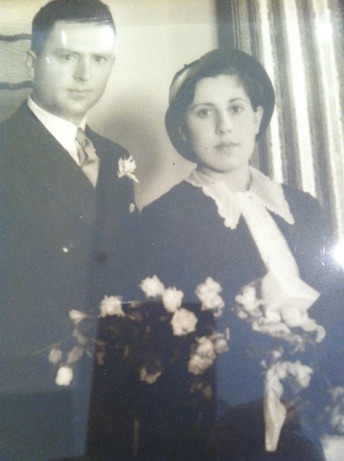
Levine ran the dairy farm there from about 1946 to 1992.
Beverly remembers: Klippiespan was the place I grew up from the age of about three (1954). It was one of my favourite happy places. We all lived on the farm together. As the sons grew up and married, space was made for them. Sirrel, who farmed with my dad Levine, lived on the farm in their own house with his wife Barbara, and their five children, Ruth, Nathan, Deborah, Amanda and Daniel from around 1966 until around 1980-ish when they bought a house in Park Road Kimberley. When Julian got married to Dee (now Reddan) dad divided off 1000 Morgen to form a separate farmstead call Rooifontein for them.
I recall mostly the 1960s from when I was about ten, by which time my two big sisters, Denise and Jennifer, had already left home. My brothers, Julian and Sirrel, remained on the farm, Julian becoming a pharmacist, and Sirrel remaining a farmer.
Our farm had mainly dairy cows. We also had sheep and a few fruit trees and veggie patches. The milk was mainly delivered in milk cans to Kimberley homes twice daily. The families would put their milk cans out on the “stoep” and the empty cans would be removed and replaced with a full one. In later years this became glass bottles. When there was excess milk it was delivered to the cheese factory.
I recall mainly that I was taken to school with the milk truck and dropped outside (from kindergarten, through Belgravia Junior School to Kimberley Girls High School) at around 05:00 every morning. So, I sat on my suitcase (until I was too big to do that) waiting for the school gates to open. I was collected from school either by mom or one of my big brothers. One of the joys of being collected by a brother was that we stopped in at Kiddies Bakery and bought hot fresh bread which we ate on the way home. Once home I spent my afternoons listening to LM radio, doing homework, riding horses, and walking in the ‘veld’ carrying a .22 gun to shoot snakes.
I also remember a huge fig tree growing in one of the gardens (there were three separate ‘gardens’ or maybe ‘camps’ on the farm, each with a windmill and a cement dam). As a child of about 11, I climbed the fig tree to get figs and fell off one day, without breaking any bones – Datnow bones are very strong and don’t break easily! I also recall hunting trips with my brothers as there was a fair amount of game on the farm. I was the designated driver from about the age of 10.
My mom Betsy ran a Milk Bar in the centre of Kimberley for many years, but not sure of the dates. The family (I think maybe my dad Levine and uncle Mike) owned an ice cream factory on the other side of the bridge that crosses the railway line, which was sold in due course to an Indian gentleman who called it Covent Garden and ran it as a successful Ice Cream factory for many years. My dad continued supplying him with milk. (We all remember delicious Covent Garden ice-cream and the bicycle carts that drove around town ringing their bells and selling it.)
About Beverly herself she writes, I graduated from matric in 1968 and also received a DUX medal having obtained five distinctions in Matric. I won a bursary from De Beers to study medicine at Wits and even to attend residence at their cost. I gave it all up for LOVE!!
I married Richard Marcus on my 18th birthday, in 1969, and had three kids with him by the time I was 24 and divorced him in 1978. We have however remained in touch until today. Here is our wedding picture on the steps in front of the synagogue.
Once married though I immediately started studying by correspondence and as I could not study Medicine that way (no University in Kimberley and no laboratory to do practical) I registered for the next degree on the list which was Law. I completed my B Iuris LLB in five years (instead of 6), won bursaries each year to help study thank goodness as there was no money, and wrote exams whilst I was pregnant or nursing my babies.
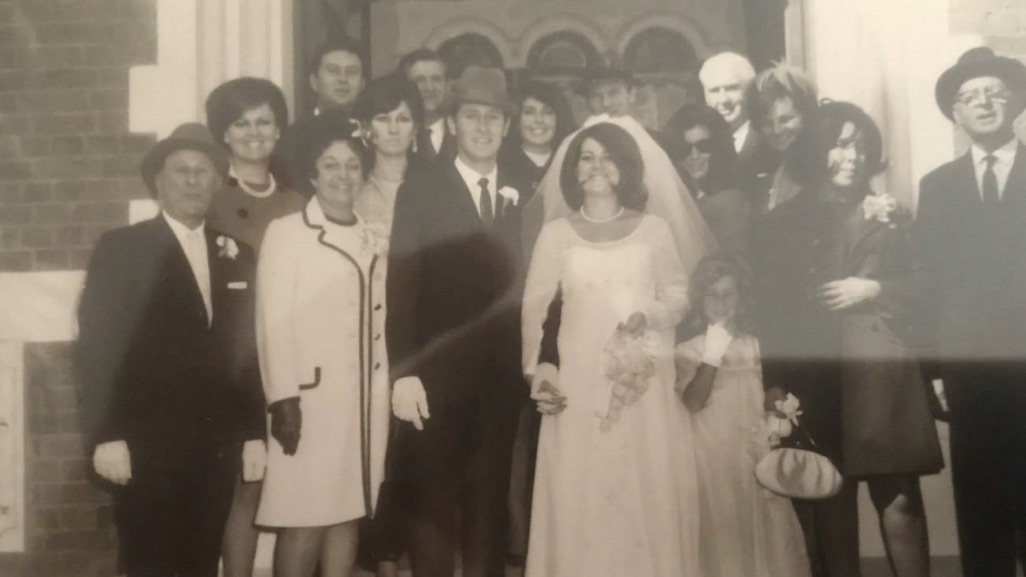
In my retinue on the steps of the Kimberley shul you can see: Front Row: Aaron Marcus, Cecelia Marcus, Richard Marcus, Beverly Datnow; Nicolette Hendler (Jen’s daughter - a little in front of me), Betsy Datnow; Levine Datnow Second Row: JoAnne Marcus; Rose Marcus; Denise Datnow Valkin; Jennifer Datnow Hendler; Marie Erlank Datnow Back Row: Lionel Marcus; Alec Kaftel; Charles Valkin; Mike Datnow.
After my divorce from Richard, I relocated to Kimberley and first joined the Bar and later the Side Bar. I moved to Cape Town in 1981. I met the man I am currently married to (common law) in 2000. He is Fred (River) Rosenthal and his grandfather Myer Magid hails from Kimberley where he was a watch repairer and Jeweller (as does his mother and Aunt Sarah and Judy).
Dee Reddan wrote, I came to Kimberley as a young bride of Julian Datnow in November 1971 from Cape Town where I was born. Julian worked as a pharmacist. We lived on Rooifontein farm which was a separate erf adjoining Klippiespan. The milk from Klippiespan was bottled with the name Rooifontein Dairies. Levine and Betsy lived on Klippiespan with their other children.
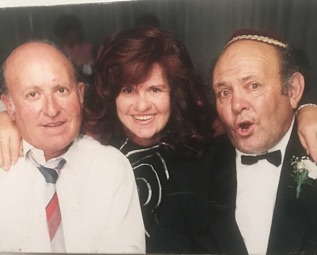
Dee and Julian were sadly divorced when their three boys were still young. Dee says: In later years, our sons moved with their father to Cape Town. Julian passed away in 2013. Sirrel and his wife Barbara have both passed away.
Left is a picture (sent by Beverly) of herself Beverly in the middle.with her brothers, Julian (left) and Sirrel right. Below we see cousins, Norman (Mikes Son) and Beverly (Levine’s daughter) with Cindy Marcus, Beverly’s daughter and Beverly’s friend. (Picture courtesy of Lisette)
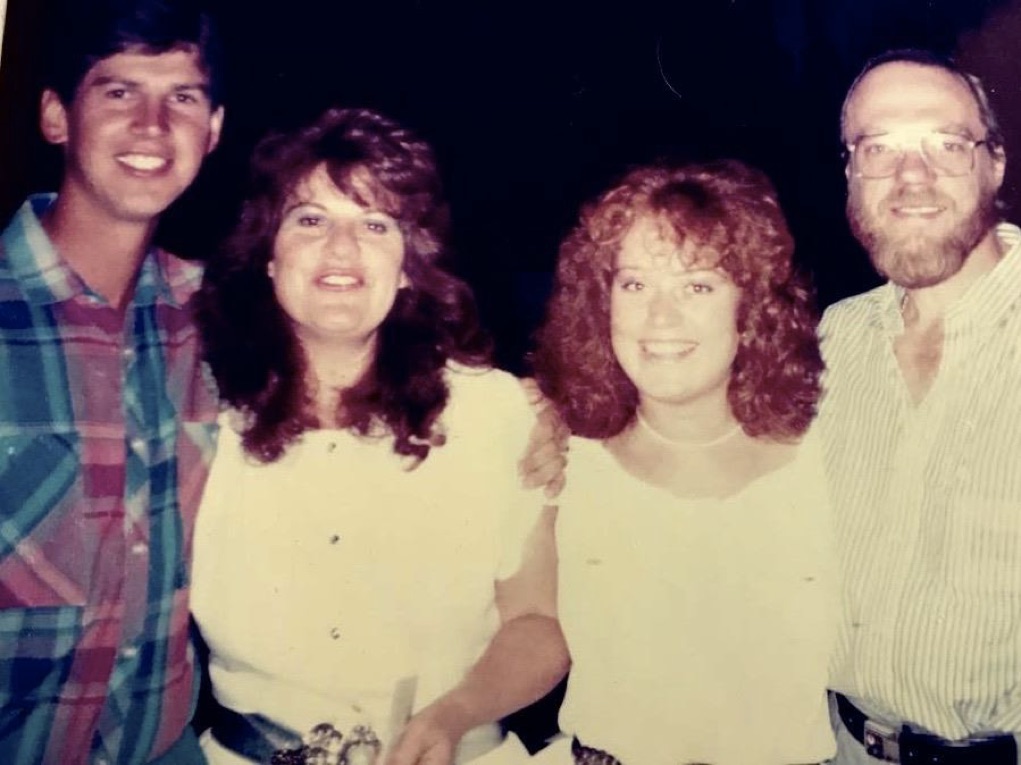
Dee writes: I moved to Knysna after spending 20 years with my present husband Mike Reddan, running a business in Kimberley. We have been in Knysna for 21 years and enjoy the beautiful, peaceful town and outlying areas. I am now in regular touch with our sons and grandchildren. Hilton, lives in Israel and Andrew and Paul live in Cape Town. Thank goodness for WhatsApp; it makes contact with the families so much easier.
Betsy Datnow died in 1994 and Levine died in 1996. They are buried in Cape Town, Pinelands no 2 – as are their sons Sirrel who died in 2019 and Julian (in 2013. Below are pictures of their gravestones and also below a picture of Julian and his gravestone.
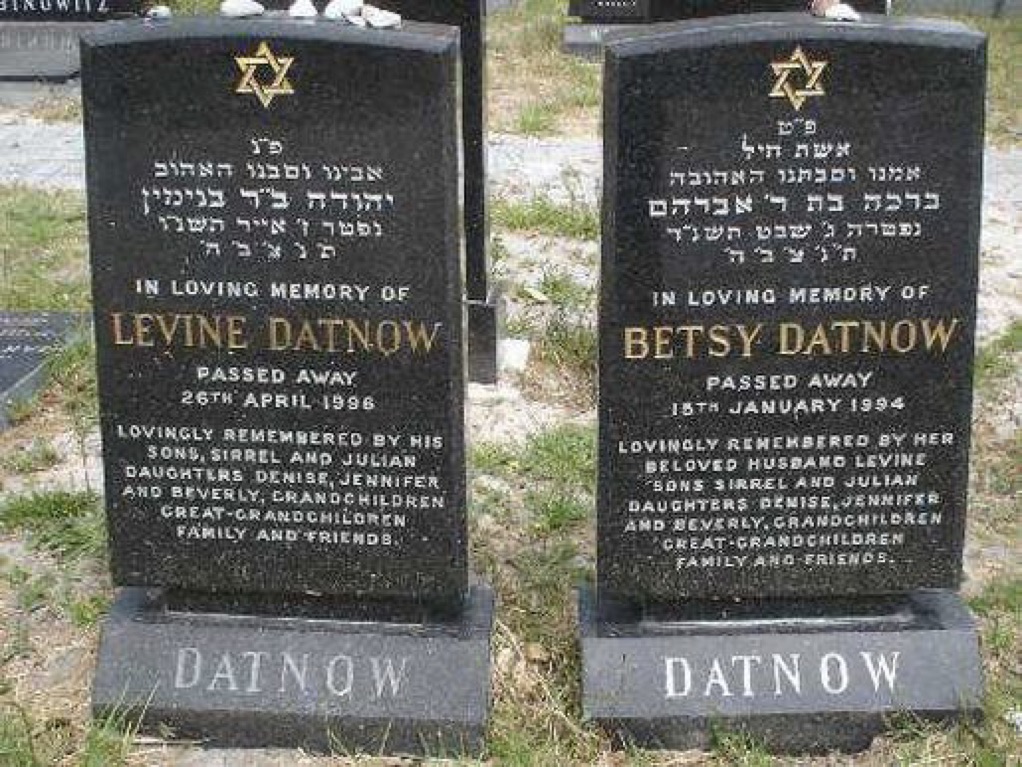
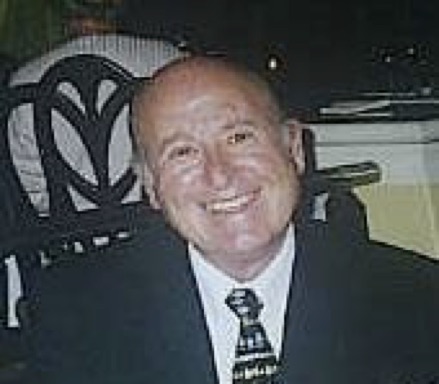
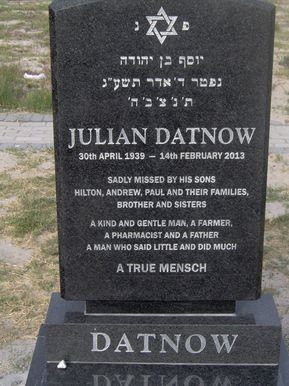
Mike Datnow 1908 – 1989
Mike Datnow (b September 1908 in Kimberley) grew up with his father and mother, Benjamin and Sarah and siblings Morris, Levine, Dina and Ray and youngest brother Jack at Bachelors Hall, were the family had first settled and where there was a big diary operation.
Mike and Sue
Mike first married Sausan Blignaught. They had a son (Anthony) Tony Datnow b.1940) and daughter Sylvia. They grew up with Mike and Sue in a house on Bachelors Hall. Dee Reddan told me that Tony with his wife Ardath farmed at Bachelors Hall. She said that Tony’s son David Datnow, worked for De Beers for many years. And that they also have a daughter, Tracey.
Mike’s grandchildren, Tony’s children, Tracey and David Datnow have both now been in touch. Tracey confirms. Bachelors Hall where we grew up, had ‘Uitkyk’ and ‘Benfontein’ bordering us. Klippiespan and Rooifontein are on the Boshoff/Bloemfontein Road and we were on the Perdeberg/Bloemfontein Road.
Tracey says: Oupa Mike was married to Granny Sue. After the divorce, Granny Sue lived in Kimberley town and she ran a small dairy. Dad Tony lived with her for a while with Aunty Sylvia, but dad was sent to Marrick to farm with Mike, when he was about 13/14, (1954) and then he was sent to agriculture college in Hartswater.
When dad Tony got married, in 1966, he and Ardath went to live on Weltevrede a farm adjacent to Marrick. When I was 2, they moved to Bachelors Hall, where dad Tony ran a large dairy farm with his father Mike who had acquired the farm from aunty Dine (his sister Dina). (Tony later acquired the farm from Mike). They milked twice a day at 4am and 4pm. In the holidays it was a great treat for me to “help” him in the dairy and would ask him to wake me at 4am, I had a little overall and gumboots and went down to the dairy to help him make sure all was OK.
David Datnow says that in about 2000 his dad Tony sold Bachelors Hall to a cousin of his from the UK – a Dr Edward Datnow, but I’m not sure that they are actively farming or using the farm at present.
Mike and Marie
Then Mike married Marie Erlank b 1931, (daughter of Hezkia Erlank and Jeanette Mary Hibbs Erlank/ Archer). Marie’s grandfather was born in Norway. Her father Hizkiawas born in 1883 in Colesburg South Africa and her mother Jeanette Hibbs Erlank was born January 16, 1896
The Poplars, Warwick, Sherbourne, UK.
Marie grew up inDingle which was a small mining town just next to the Sishen iron ore mine in the Northern Cape.She came to Kimberley as a youngwoman where she met and married Mike Datnow who was 23 years her senior.
After they married in the mid ‘50s Mike acquired the farm called Marrick. (Many people thought it was named by them as a combination of Marie and Mike, for obvious reasons, but the name of the farm was Marrick, long before they bought it – a nice coincidence).
Marie made a warm family home on Marrick. She became a central figure in the Datnow family. She kept in touch with Mike's siblings, children and cousins and their offspring and her home was open to all. She was a most gracious hostess always welcoming and always warm and interested. She knew about every member of the family and was interested in them and their doings.
Mike and Marie Datnow’s children were Benice (1956-91) Norman 1958 and Trevor 1960.
Benice married David Kretzmar. They had two daughters Janna b 1980 and Samantha b.1982. Benice sadly died of breast cancer in 1991, when the children were just 8 and 10. Norman Datnow, is a vet now living and practicing in Johannesburg. He was previously married to Lisette Shain Datnow. They had two sons, Danny Steven Datnow and Michael Joel Datnow before sadly being divorced. Norman re-married to Dianne had another two sons Joshua and Aaron.
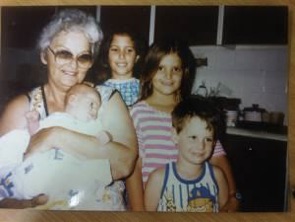
Trevor Datnow, with his wife Hubre, now owns and runs Marrick as a game farm. They have two children Gabi and Mike.
Beverly says that Lisette has been amazing and although divorced from Norman she never divorced from the family and has played an active role in the Datnow family and still does. (Lisette has provided many pictures and much information about the family that she clearly loves)
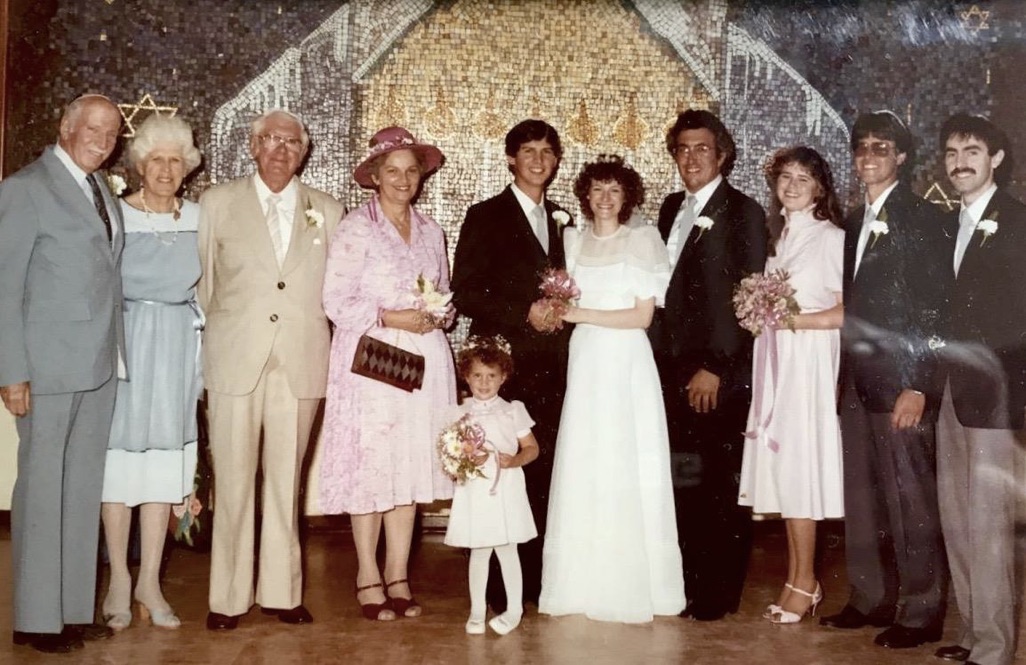
In this picture of Normans wedding to Lisette (courtesy Lisette) we see the Retinue from the left Lionel Albert (Ray’s Husband), Ray Datnow, Mike and Marie Datnow, Norman and Lisette, David Kretzmar (Benice’s husband) Tracey Datnow, (Tony’s daughter), Trevor Datnow and cousin Barry Jacobson. The flower-girl is Janna Kretzmar, David and Benice’s daughter.
Mikes Farms
David Kretzmar has written that in the course of his farming career, Mike Datnow farmed on a number of farms. He is not sure when exactly they were acquired or sold.
Broomlands was about 1,800 or 1,900 morgen and was north of Kimberley – about 15kms I think - just off the Johannesburg Road – as we called it. Used for cattle, sheep, and goats.
Melrose – about 1,500 morgen, in the Orange Free State, and we got to it by driving through Uitkyk and a few other farms. Also, cattle and sheep.
Botha’s Dam – a small farm of about 700 morgen – much further past Bachelors Hall and then a few kilometers north of that. This was the most ‘remote’ of all the farms – mostly sheep and goats, but also some cattle.
Marrick – Bought in the early 1950’s, I think after Mike and Marie were married, which was 1954. This farm comprised a number of different title deeds but was always referred to as Marrick. Weltevrede was bought later, and then a further two portions adjacent to it were acquired. Marrick and its adjacent farms thus became the home farm from the late 1950’s onwards. The total area was eventually over 3,000 morgen and Mike had a dairy operation there, milking around 200 Friesland cows – much like on the other two farms where he had dairy operations running. There were also sheep and goats on Weltevrede and the upper parts of the farm, as well as lots of game.
Riverside – He bought a 3,000 morgen farm called Riverside, located on the Riet River, near a tiny place called Plooysburg. Not sure when this was bought but possibly in the 1950’s as it had irrigation from the river and he produced Lucerne there, which he used for feeding the dairy cows on the 3 farms where they were dairying, Marrick, B/Hall and Olifantsdam. They also grew wheat and that crop was sold each year to the co-op in Modder River or Douglas. The veld part of the farm had cattle and sheep.
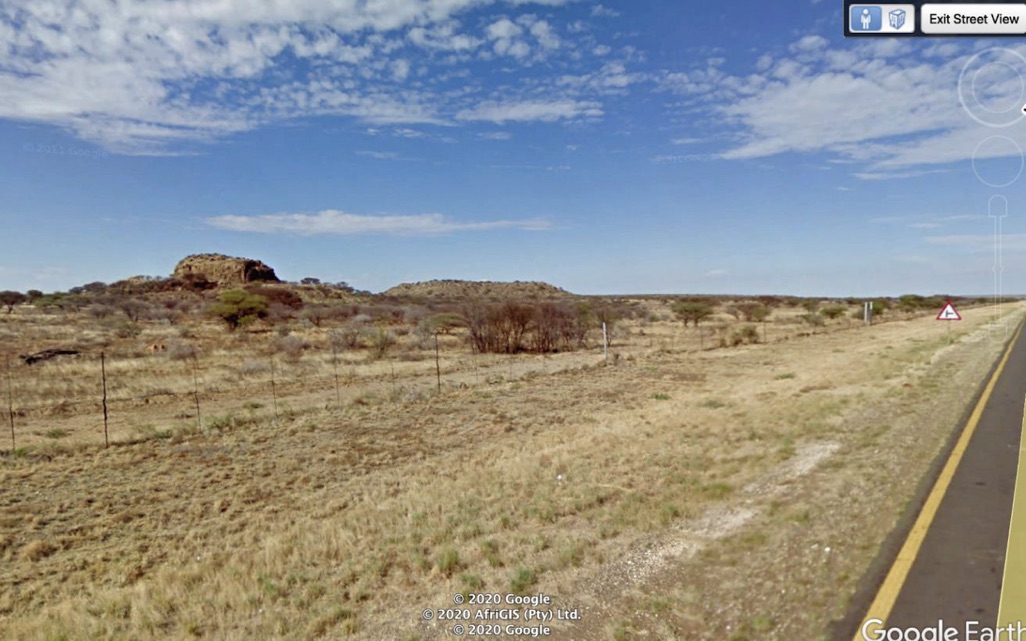
Kingston and Tenerife – In 1970, he bought a farm just off the Schmidtsdrift Road – it was called Kingston, and a few years later acquired the neighbouring property known as Tenerife. These farms were farmed with cattle, sheep and goats. Tenerife was bounded by the road to Schmidtsdrift and this property had an unusual feature on it that could be seen from the road as one drove past heading to or from Schmidtsdrift. This was a kopjie that had been cut for rock to be crushed for the building of the “new” road between Kimberley and Schmidtsdrift – when they redid the road and tarred it. The result was something that looked like a giant nipple pointing to the sky – sorry – I cannot think of another way to describe it – and that’s how we always referred to it.
What made it noteworthy was the fact that it was often referred to as being the land feature at or closest to the “middle of South Africa” – quite incorrectly as I later discovered. Way back in the 1970’s we used to buy Chappies Bubble Gum, and on the inside of each wrapper in capital letters were the words “DID YOU KNOW” and they would give one, two or more “facts”. One day we found a Chappies which had for the DID YOU KNOW – “Where is the centre of SA?” or words to that effect, and it showed a sketch of that cut kopjie on Tenerife, claiming that to be where the centre of the country was – as we all thought at the time. See above and below the images I have found from Google Earth street view! First Looking towards Schmidtsdrift direction and under that with back to Schmidtsdrift
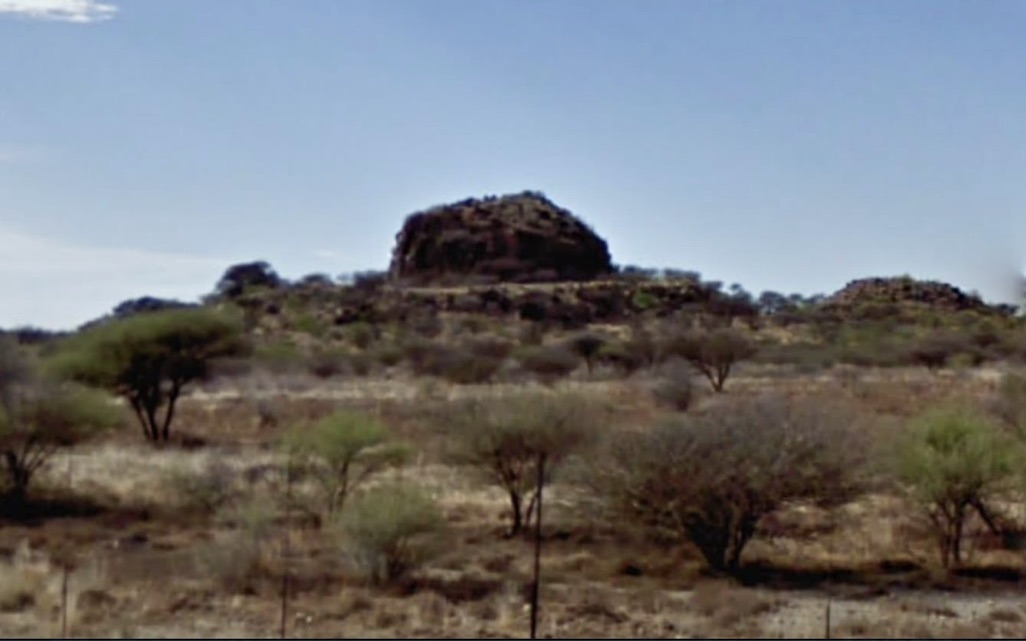
Graspan originally bought by Benjamin, measured approx. 3000 morgen, and was farmed with cattle sheep and goats. The farm was sold in the early 1980’s to the government in what was a “friendly expropriation” as they had decided to establish a National Park there. They purchased further adjoining properties there and established the Vaalbosch National Park. This land became the subject of a land claim after 1994, and in 1998 Sanparks started looking for an alternative area to “relocate” the park. In 2005/6 the Vaalbosch National Park moved to a new location near Plooysburg, between Kimberley and Douglas, and it was renamed the Mokala National Park.
Mike had leased Olifantsdam, near Bachelors Hall, from De Beers, not sure when. It must have been at a time when he was already getting established as these were relatively large farms and would have required further capital to stock with cattle, sheep and goats, and in the case of Olifantsdam, dairy cows.
Mike leased another De Beers farm to the west of Kimberley off the road to Schmidtsdrift.This was adjacent to Graspan, which Benjamin owned. It was approx. 7,000 morgen (6,000ha). It was called Waterkolk. David remembers going there with Mike a few times as a youngster still at school. This was a large farm with very few camps, and it was farmed with cattle. They were not worked with often and as a result were just wild. It was a big thing to go there to work with them once or twice a year. People and horses would be sent two or three days earlier to round up the cattle and get them into the kraals so that they would be in and ready for working when Mike and his managers and their team of workers would arrive. There was always dust and snorting and charging cattle and it felt like the “wild west” and a bit like a rodeo! Beverley remembers going there too with Levine.
For most of the 20th century De Beers was not interested in actually farming their farms, but in the 1970’s and early 1980’s they began looking at doing so, as it offered better returns than simply leasing them out to other farmers. This led to them not renewing leases on their properties as and when they expired. As they took back the farms, they generally set up cattle farming operations on these properties.
Game farms
De Beers had 2 or 3 farms which they kept as game farming operations for hunting in winter – Rooipoort (Known for years as The Shooting Box – as I recall), Benfontein and Dronfield. Rooipoort is today the Rooipoort Nature Reserve 42,000ha – which is still owned by De Beers.
In the 50’s and 60’s there were springbok and some blesbok on all the farms. There were also kudu on some of them where there was thicker bush and shrub areas. At some point, in the late 50’s or in the early 60s, Mike took part in a special programme launched by De Beers, maybe with Nature Conservation authorities playing a role. The numbers of Black Wildebeest had dwindled to the point that they were endangered as I recall it being told, and De Beers had a good number on one of their farms, and made breeding groups available to a number of farmers around Kimberley, so that the numbers could be bred up. Mike received 1 bull and 2 or 3 cows at that time, and over the years they bred up to a healthy herd, as happened on the various other farms where they were distributed, and the threat to their existence was averted.
Winter Friends
Up to the 60s having game was considered a bonus a ‘pasela’ on the farms, and not at all valued. This is a very far cry from how it is today, with game being farmed, in many instances, instead of domestic livestock such as cattle and sheep. David said: I clearly recall how the phone would start ringing at the farm in about April or May, with ‘friends’ calling from Kimberley and Cape Town (am sure there were people from other places too) and they would want to speak to Mike. Once a year callers they were! After some chit-chat and small talk, they would get to the point – ‘How are the buck looking this year Mike?’ or ‘Hoe lyk die bokkies Oom Mike?’ and ‘How are the birds this year?’
This played out every year – people calling and asking these questions, and then travelling to Kimberley (if they were not from there) to come hunting in the area. They would shoot mostly springbok and a few blesbok, and those who were into bird shooting used to go on early morning sandgrouse shoots. These shoots were hosted by Mike and sometimes Marie joined, and WERE TAKEN FOR GRANTED – THESE FRIENDS AND VISITORS NEVER PAID A CENT – for anything! We always used to refer to them as “Winter vriende” meaning Winter Friends. This was not unique to the Datnows – that is how it worked in those days – it was as if the game was there for the taking, and these people were hosted and entertained each year – this always involved much time and effort, and I recall much wear and tear on vehicles that had to be used, being driven in the veld. We also provided the braai and the booze. Seems crazy when I think about it now. The shooting was often terrible – many of the guys – who did love the hunting – were useless at it, and often wounded buck which we would have to go after to make sure they were put out of their misery and not just left….
I would say it was in the 1970’s that things began to change in earnest, with value being attached to the game aspect of the farms and farming. The free and ‘free-for-all’ shoots came to an end, and commercial shoots replaced these – mostly with different and more serious hunters, who were often better shots (not always). Over the years more species of game were added and in some cases game fences were erected, to keep the game on the farms – stopping them from simply jumping over the boundary fences and going onto neighbouring farms, where they were often shot. Mike would get orders for buck or venison, and he, Norman, Trevor, Tony or myself, would go into the veld to shoot what was required to fill the orders. This was often on the different farms.
We also had commercial shoots, where local business-people would want to entertain friends or clients, and in some cases prominent politicians, and these too became annual events with regular clients. We hosted these, but our “clients” organised the programme and catering and they provided and saw to the braais and the booze, which was always a big thing after the hunt was over for the day. The hunts started early in the morning – it was always mid-winter and really cold! Often below 0 degrees! We managed the hunting, placing the hunters in the veld, and drove around throughout the morning or longer if it continued into the afternoon, collecting the buck that had been shot, to take them back to the “camp” where we had people clean and dress the carcasses. At the end of the shoot, which was usually around 3 to 4pm, there would be a huge braai, with lots of booze, and this could continue to as late as 10 or 11pm. We would then leave the farm where the shoot was late at night and head back home to Marrick – these shoots were never at Marrick.
Things are so different today. There are no more big shoots like that anymore. Game is farmed much more methodically and scientifically, and there is no ill-disciplined shooting permitted by farmers. Various game species are bred specifically for either trophy or venison hunting, whilst other species are bred for conservation and tourism. Trevor and Hubre run Marrick today as a game farm, with different and separate facets. They breed species such as sable and roan antelope, buffalo, and many others as well, and people come to the farm for game drives, for bird watching, and in a separate area, for hunting. They offer homely farm style accommodation warm hospitality and wonderful food, on the farm. People visit from all over South Africa and overseas visitor stay many days to enjoy what Marrick has to offer.
Marrick also has some rare ‘exotic’ breeds such as copper springbok and black springbok. It also is home to the very rare nocturnal animals, the Aardvark, as well as the Aardwolf and African Black-Footed Cat. Marrick offers guided night drives, particularly to see these rare nocturnal animals, Wildlife enthusiasts from all over the world come to Marrick especially to see the Aardvark and the night drives on this property are almost 100% successful for sightings of this elusive and unusual animal.
This is what Trevor and Hubre say on the Marrick Safari website https://www.marricksafari.com/
Marrick Safari is located in the Northern Cape Province of South Africa, approximately 12km out of Kimberley on the Douglas road. Nestled in 3000 hectares of unspoilt savannah thorn veld, this family-run business offers a vast expanse of space and silence providing endless opportunities for returning to nature. The property itself sustains a range of ecosystems, from African savannah land to rocky hillscapes to thicker thorny bushveld and there is also an ephemeral wet landscape. At Marrick Safari, there is "something for everybody", with a variety of activities specifically designed to enable guests to get as close as possible to this large, unique ecosystem that is almost free from human interference.
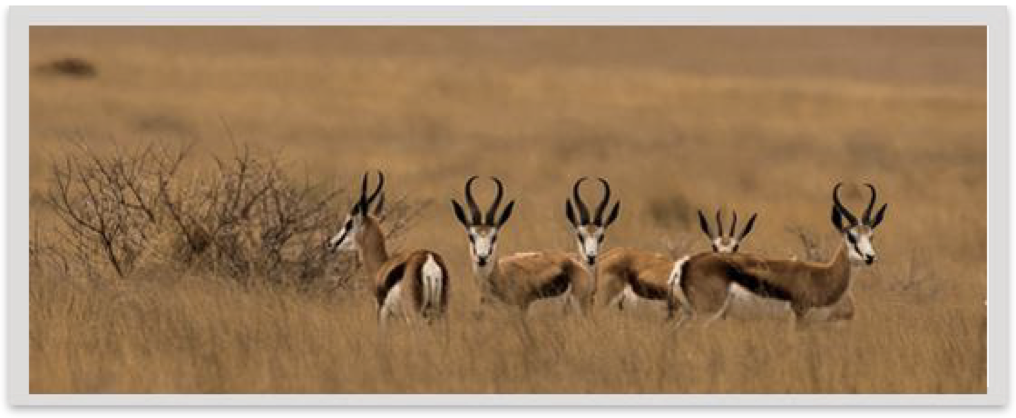
Marrick Safari has been a family-run undertaking since patriarch Michael Datnow bought the farm as a dairy and sheep concern. The running of the business was then taken over by his two sons Norman and Trevor after Michael's passing. Trevor took sole possession of the farm and together with his wife Hubre, they have been working towards establishing a world-class eco-tourism operation, focusing on the provision of home-style service. https://www.facebook.com/Marrick.Safari.Kimberley/ Sunsets at Marrick are extraordinary and there is nothing more relaxing after a hot day in the bush than sipping an ice-cold drink next to the Pan. Enjoy dinnertime around an open fire while chatting to friends and other guests before retiring to your luxurious cottage for a good night's rest.
Barney Horwitz Chairman of Griqualand West Hebrew Congregation wrote after Marie passed away in 2012, Marie was a most beautiful young woman and when she fell in love with Mike Datnow she converted to Judaism.
Marie became very active in the Jewish life of Kimberley being a member of the Union of Jewish Women and Women’s Zionist League as well as being an active Rotary Anne and generally working for those less fortunate than herself. Her home had expanding walls and there are many young and older people who have extremely fond memories of "Auntie Marie" and her warm hospitality.
(Dee Reddan writes in April 2020: I remember spending a Yom Ha’atzmaut or two on the farm Marrick with my late aunt Marie Datnow where the whole Jewish Community of Kimberley would gather and enjoy a wonderful spread.)
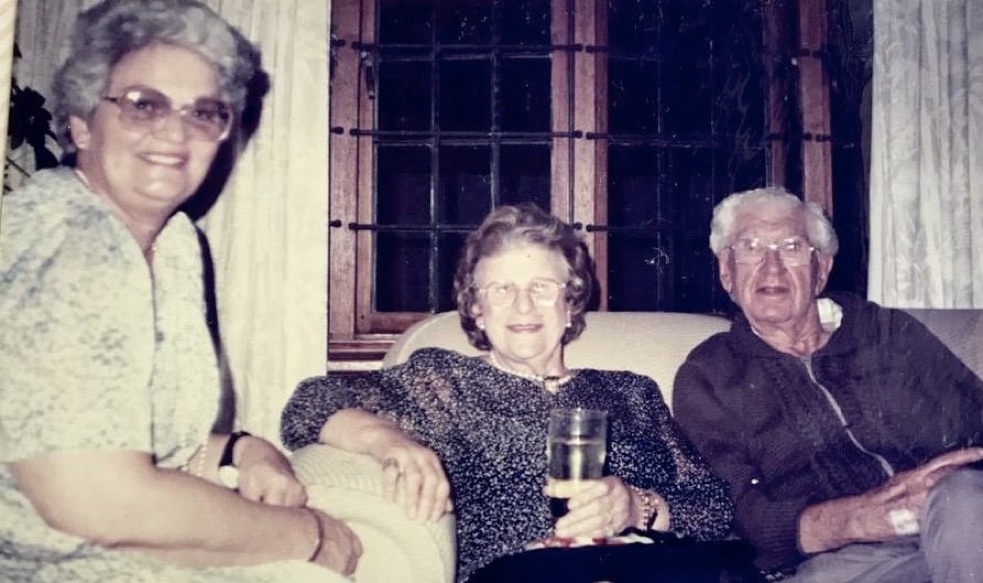
Marie left, Elaine Datnow (wife of Morris) and Mike Datnow on Marrick (courtesy Lisette)
Marie lost her beloved husband Mike in 1989. Mike was a respected Kimberley farmer and had served as a member of the Divisional Council for many years. A couple of years later she lost her beloved daughter Benice to breast cancer. This took a heavy toll on her, but she really enjoyed her grandchildren and loved them all dearly. She was a loving, warm, giving, generous human being with no malice at all and who endured many hardships, and was always deeply loved all her family”.
She was also a person who lived her Judaism through her children and gave meaning to the phrase “ the mother rocks the cradle” since I am told it was she who dragged them away from the adventures of farm life and into cheder and ensured that they would grow up to perpetuate their Jewish heritage.
Mike and Marie are both buried in the Kimberley Jewish cemetery.
Many thanks to all members of the Datnow family and in-laws for their generous sharing of the Datnow family farming story around Kimberley.
Geraldine Auerbach MBE, London, May 2020
Compiled by geraldine.auerbach@gmail.com
This website is managed by Eli Rabinowitz
Updated May 2020
Copyright © 2020 Eli Rabinowitz


